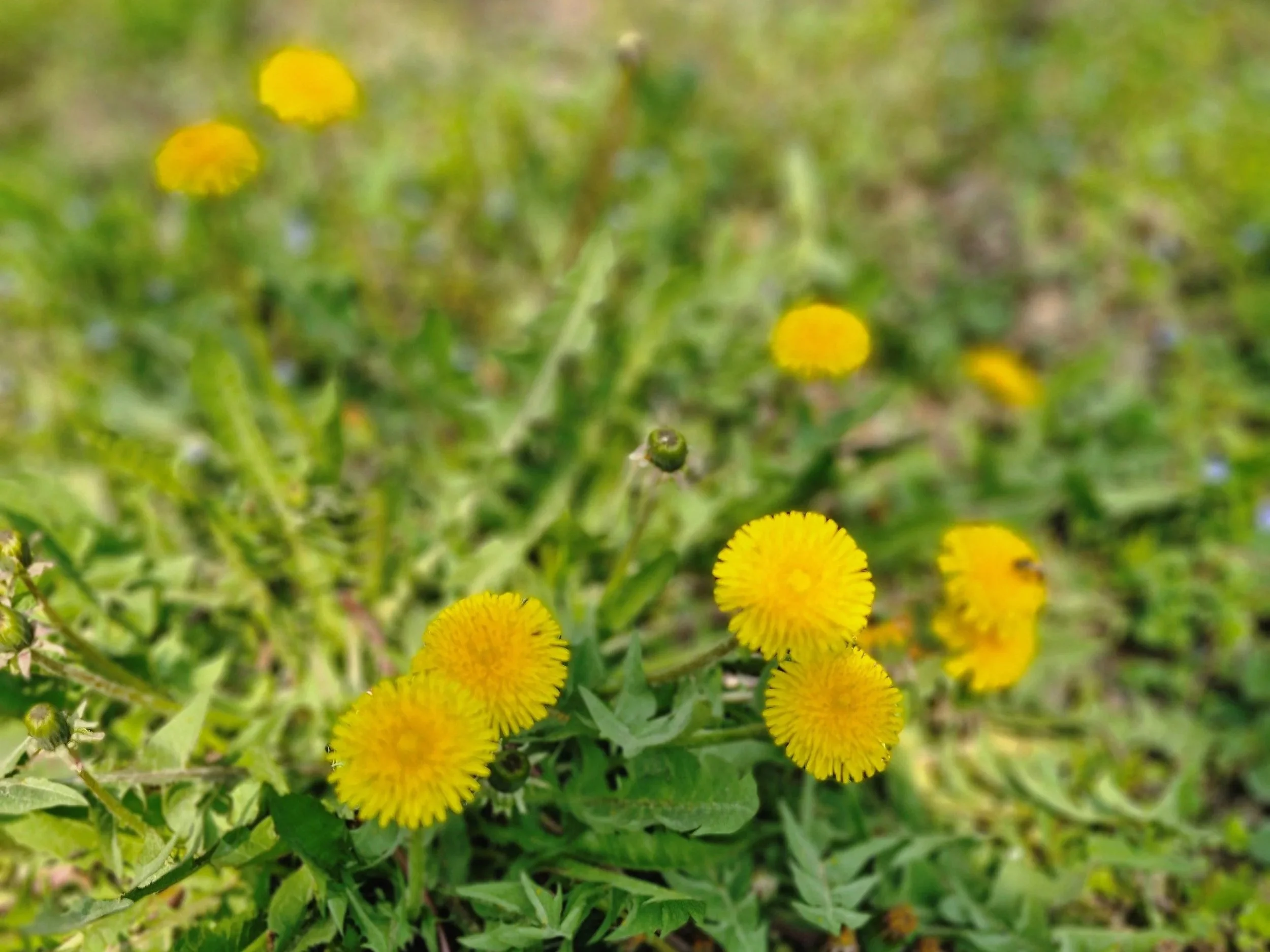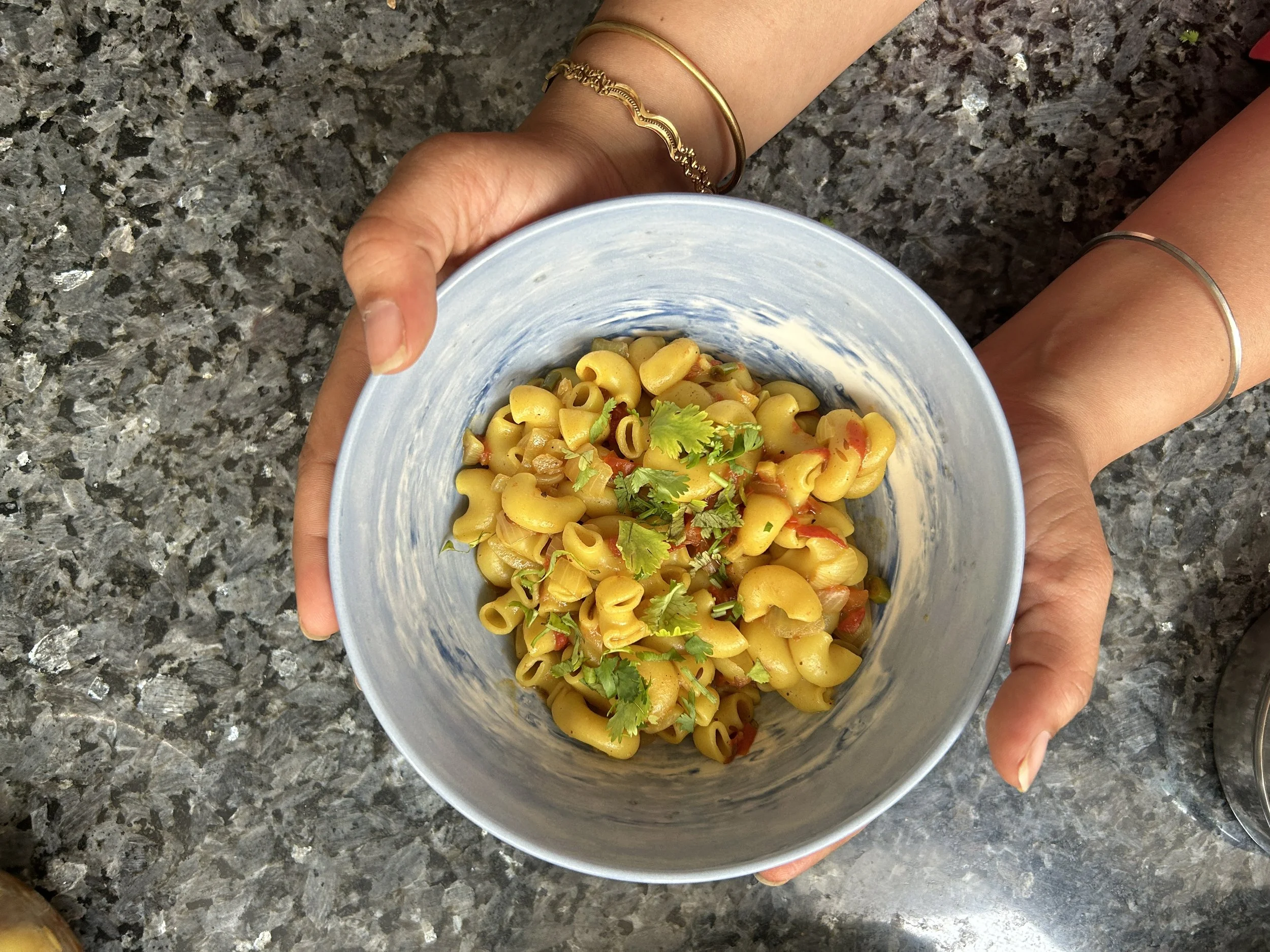A Dandelion Leaf and Meat Curry From Kashmir

A treasured spring recipe in Kashmir is a meat curry flavoured with dandelions. Hirra Azmat finds out more.
In Kashmir, spring is more than a season — it is a homecoming. After long nights of Chillai-Kalan (the coldest and most severe part of winter in the valley), the dormant landscape stirs back to life. As buds open, dandelions bring their bright, sunny yellow blooms and serrated leaves, to greet the light. Known locally as hund, these wild plants not only herald the new season but are also edible, and deeply intertwined with the region’s culinary and medicinal traditions.
Nearly every part of the plant can be eaten. Both fresh as well as dried dandelion leaves have reappeared in Kashmiri kitchens in the spring and winter for centuries, revived in a curry that is simmered with meat, spices and remembrance. The flavour of meat curry and dandelions, or hund te maaz, is subtle, with a hint of sweetness. But the magic lies in patience — bitterness tamed, spices coaxed, flavours layered.
The value of dandelion extends beyond taste. It has long been cherished for its healing values. It is loaded with calcium, vitamins A, C, and K, as well as vitamin E, folate, and traces of B vitamins, and enriched with minerals like iron, magnesium, and potassium. These greens are prepared for new mothers in the region, to restore strength and aid recovery after childbirth. “As a child, I often wondered why anyone would be so fascinated by what most considered a weed. One day, I asked my grandmother. She smiled and told me about the powerful nutrition packed in this wild plant,” says Waheeda Pandit, a homecook based in Kashmir. “When my daughter was born, I remember how my mother gave me lots of dandelion and meat curry to replenish the lost vigour. It wasn’t just food — it was love, healing, and tradition served on a plate.”
After a few rounds of boiling and a firm squeeze, Waheeda explains that dandelion greens mellow into something deeply earthy — ready to blend into a coarse paste that becomes the heart of this beloved meat curry.
Dandelions also hold a special place in Kashmir’s history. During the long winters, heavy snow would often block the Srinagar-Jammu highway — the region's sole roadway connection to the rest of India. “The valley would remain cut off for months. Winters were harsh, cold, and lonely. But Kashmiri traditions and wisdom helped us survive. One of those traditions was drying vegetables in the sun before the winter set in. Sun-dried dandelions were among the most prized foods, used to prepare warm, comforting meals during the freezing months,” says Waheeda.
Now, whenever Waheeda spots the golden heads of dandelions swaying in the breeze, she sees more than a wild plant. She sees her mother’s quiet wisdom, her grandmother’s tender stories, and the deep roots of care passed from one generation to the next.
RECIPE FOR HUND TE MAAZ
Ingredients
For the meat
750 g mutton
9–10 garlic cloves
2 cinnamon sticks
2 black cardamoms
1 tsp cumin seeds
5–6 green cardamoms
4 cloves
1 tsp fennel seed powder
Salt to taste (approx. 1 tsp)
2 glasses water
For the dandelion
250g dried dandelion greens (hund) – about 3 handfuls
2 black cardamoms
6–7 green cardamoms
4–5 cloves
1 tsp ginger powder
2 tsp Kashmiri red chili powder
1 tsp turmeric powder
1 tsp fennel seed powder
2 cinnamon sticks
1 tsp salt (adjust to taste)
Water for boiling
3 tbsp oil
1 onion, finely sliced
3–4 garlic cloves, finely chopped
Method
In a pressure cooker, combine mutton with garlic, all whole spices, fennel powder, salt, and two glasses of water. Cook for about 3 whistles or until the meat is 80% done. Set aside.
Boil the dried dandelion leaves in fresh water for 10–15 minutes. Drain, rinse under cold running water, and squeeze out excess water. Repeat this process three times to remove bitterness. After the final boil, taste a leaf to check; if still bitter, repeat once more.
Once ready, blend the dandelion into a coarse paste (manually or in a blender after cooling).
Heat 3 tablespoons of oil in a pan. Sauté sliced onions and garlic until golden. Add the cooked mutton and fry on medium-high heat until the oil begins to separate.
Then stir in the blended dandelion paste.
Add remaining whole spices (if not added earlier) and continue frying until the mixture releases its own oil.
Mix in turmeric, chili powder, fennel seed powder, ginger powder, and adjust salt if needed.
Add half a glass of the reserved mutton stock for moisture. Cover and cook on low flame for 15–20 minutes, then increase to high flame for the last 5 minutes to finish.
Serve hot with steamed rice. This dish is a perfect example of Kashmiri slow food at its finest.
Hirra Azmat is a Kashmir based journalist who writes extensively on science, health and environment. Her work has featured in various national and international publications. (azmathirra@gmail.com)
ALSO ON GOYA














